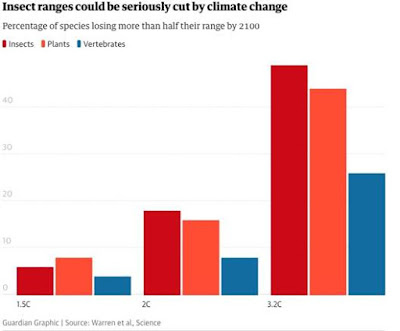The question remains at what point has the Anthropocene begun. A convenient, accurate and highly specific time line can be drawn in the rocks. The appearance of transuranic elements cause by radioactive decay is such a bright line. These are unknown in Nature or only exist in minute amounts, such as plutonium and neptunium. All the elements past uranium (atomic number 92) save where first created in the laboratory or in atomic explosions since they have half lives much shorter than the age of the Earth. Atomic testing in the atmosphere began in 1945 with the Trinity Test in the New Mexico desert, precursor to the first atomic weapons in history and dropped on Japan. Tragically, the Anthropocene is marked by another characteristic: the mass extinction of animals on Earth. According to the World Wildlife Fund and the London Zoological Society more than half of the planet's wild animals have disappeared in just the past forty years. The population of sea creatures has plummeted by 40%. It is the 6th mass extinction in the planets 4 billion year history, but the only one caused by man's occupation of the planet. This chart shows the major reasons for wildlife's decline:
Our living planet is in serious decline as shown by this chart based on population trends of 10,380 populations of 3,038 mammal, bird, reptile, amphibian and fish species:
As man's civilization morphs into an almost seamless global development covered in plastic, steel, concrete and asphalt, wild creatures are running out of room to live their lives. This chart shows the crisis faced by creatures ranging from plants to insects to vertebrates as global temperature climbs. The web of life on this planet is in danger of collapsing irreversibly. Man may be able to delay the consequences with the intervention of his god, Technos, but he cannot escape the doom. With great power, comes great responsibility:
 |
| chart credits: UK Guardian |

